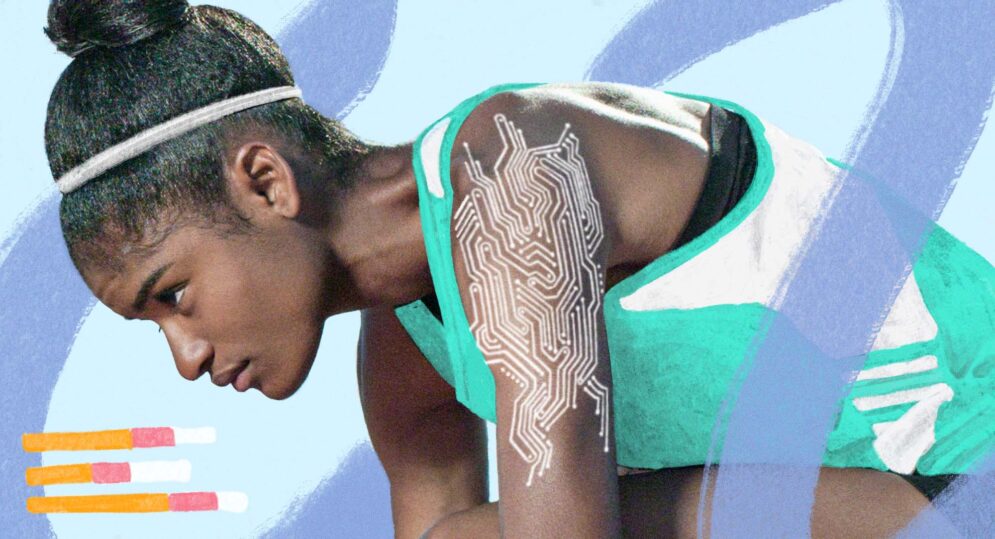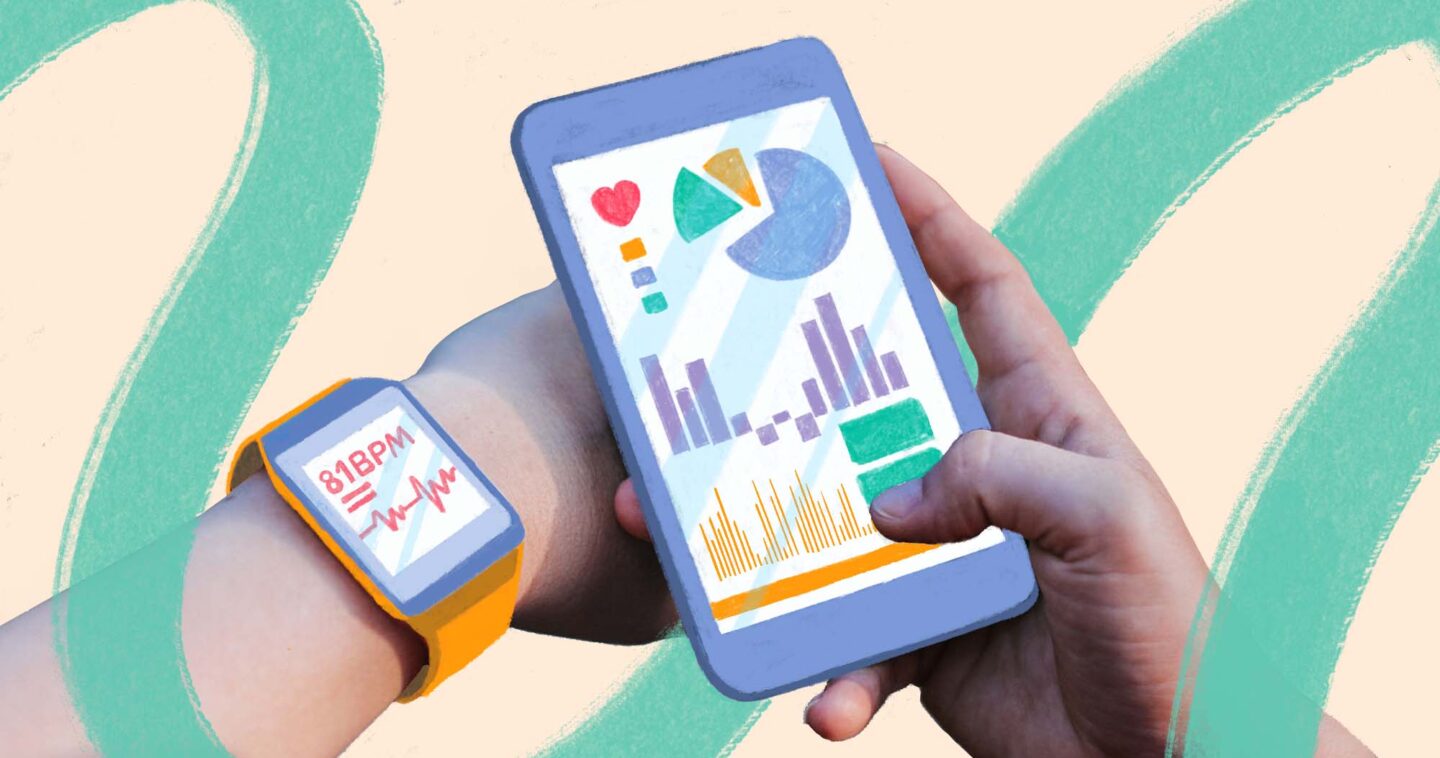On The Surface: The Data of Wearables
Consumer devices are on a clear trend: make it smaller, make it faster, make it simpler. From the watch on your wrist or the wearable biosensor tracking real-time vitals, the more seamlessly these devices integrate into our lives, the more profound their advantages become. This close integration, perhaps, is why the industry is looking to double its market size to 265.4 million by 2026.
Among the myriad benefits wearables provide, unique opportunities for insights through data stand out. Wearables represent a new way to access and leverage insightful information from everyday situations. From data about personal health to mixed reality, wearables serve as unique conduits to the data our lives generate.
Examining three major types of wearables and their capabilities will reveal the ways that data can be channeled in new and exciting ways.
Fastened at the wrist
Smart watches are, by far, the most common and successful market sector of wearables. These watches are touted as healthcare companions, devices that collect and report data about your daily habits back to the wearer. A watch can monitor fitness goals, quality of sleep, and can even take an electrocardiogram test. But these uses just scratch the surface.
Innovations in the smart watch space provide room for real-time or predictive responses as well. For example, users have found that a drop in smart watch health metrics can be a predictor for illness, and research backs up these anecdotal claims. A study from 2020 found that smart watches can detect state-like illnesses, such as the flu, while another found that they could identify Lyme disease. The utility is still limited, however. Identifying COVID-19 or respiratory diseases has proven to be harder, and the watches can’t yet tell you exactly what you’re sick with. But, that insight into the body remains powerful.
“It’s just like the warning light for your car,” said Harpreet Rai, CEO of Oura, in an interview with the Verge, “take it into the mechanic, we don’t know what’s wrong, but something looks off.”
A warning light is an apt analogy. The data collected from these watches is ultimately small and cannot reveal much on its own. The potential lies within the slow, consistent collection of that data. The wearable combines all these little bits of data over a week — higher body temperatures, elevated heartrate, poor sleep, less physical activity — and can provide insights on the overall wellness of the wearer. The consistency and persistence of data collection enables relevant feedback to user, amplifying the power of these small pockets of data.
Skin deep
Epidermal wearables are a surprisingly well-developed sector of the wearable industry, one that is exploring more specific and targeted medical devices for healthcare applications. While smart watches are collecting general biometric data, these skinlevel implants are focused on more specific applications, like monitoring for strokes or uses in speech therapy. Because of their slim profile, they are ideal for extended wear, enabling long-term medical attention that could also be conducted remotely.

Simultaneously, these devices are becoming an invaluable tool for professional athletes. Using the focused nature of these devices, athletes are taking the data from their workouts and past peformances to tailor their preparations to maximize the next performance. Coaches are also tapping into this data help better manager workloads and maintain game-day fitness across their rosters. If a player didn’t feature in a weekend match, coaches know to ramp up their intensity in training come Monday.
An injured player also has access to details about intensity, balance, speed, and other performance metrics to help them track their progress in recovery. These data can be particularly important in helping players prevent further injury as result of overloading or modifying their form to prevent reinjury.
While a world-class athlete could offer verbal feedback, devices that adhere to skin provide hard data to corroborate with the eye-test. A trainer can evaluate a runner’s best lap through metrics other than time. The trainer can see the athlete’s heartrate at its optimum range, their stride at maximum length, and that their breathing was optimizing oxygen intake. These underlying numbers are just as important as outcome when evaluating performance, and wearables open a new window into these metrics. As athletes and clubs look to get everycompetitive advantage they can, these minute details can be the difference between glory and defeat.
Out of sight
Smart glasses, or electronic wearable eyeglasses — despite their conspicuous introduction —remain a wildcard in the industry. Google Glass, for example, was touted as a seamless window into the digital lives of everyday folks in its debut. Today, that future has yet to materialize, and consumers and businesses alike remain divided about what it should be used for. A case of a great idea, but poor execution perhaps.

Currently, Microsoft and Google have been implementing Hololens 2 and Google Glass in select enterprise settings to enable mixed reality communications to enable collaboration in ways that were previously inconceivable. For example, Hololens helps Mattel collaborate on the design of their Barbie products, catching mistakes and improving designs with input from their global partners without the need of an in person meeting or shipping prototypes all over the world.
Ultimately, the power of these holographic wearables lies in their ability to capture and visualize data in novel ways. From renderings that teams can look at together and change in real time to the ability to supplementing your understanding of topic in a meeting without having to break concentration on the presentation, eyewear provides a unique window to the ocean of data that our world floats upon.
“It’s not just [the] wearable devices,” Chris Munnelly, director of connected worker and safety software for Honeywell’s industrial safety business, said in an interview with WIRED. “It’s the data that we can capture from these connected devices. That will help managers make real-time decisions to keep their workers safe, but also to improve productivity at their jobsites.”
Data is all around us, but that means nothing if we cannot capture, visualize, and leverage it. Wearables enable us to capture, understand, and enact on that information in unprecedented ways. As The Verge put it in their state of the union on consumer devices, “in an era of tech when more data than ever is being gathered, transmitted, and analyzed, wearable gadgets are the ultimate expression of that data collection.”




